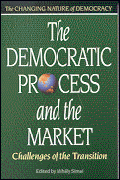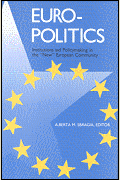Europe 1992, the market integration of the twelve European Community (EC) member states, has attracted widespread attention as an economic project of enormous importance. But though journalists and scholars have focused much attention on the economic aspects of Europe 1992, the program’s impact on the governance of the EC has been largely ignored—even though the creation of a single market is intimately linked to changes in governance. With each member state having a very different institutional structure, the variation within the EC is far greater than that found in federations such as the United States. Though this variety adds to the complexity of consensus building among the members, it allows effective representation of diverse national interests and needs, thus making the EC a very strong, competitive force. To negotiate effectively with this “new” Community, international policymakers will need a greater understanding of how the EC will operate in the wake of the Maastricht Summit. Euro-Politics examines various aspects of the institutional dynamics of the EC and offers important insight into policy making within the Community. David Cameron discusses the origin of the 1992 program and examines the role of the nation-state in the Community. Guy Peters surveys the “political” and executive institutions, while Martin Shapiro discusses the European Court of Justice and the evolution of judicial review within the Community. John Woolley examines the European Monetary System and the movement toward the “EuroFed,” Gary Marks studies the importance of the Regional Funds for both the EC and selected member states, and Peter Lange discusses the Social Charter and its implications for both employers and unions. Alberta Sbragia concludes with an analysis of institutional dynamics and policymaking with the Community in light of the new questions they raise for traditional notions of governance.
Related Books

Colin Mayer, Erik Berglöf, Marco Becht, Mathias Dewatripont
September 1, 2002

Mihaly Simai
September 1, 1999
Author
Edited by

